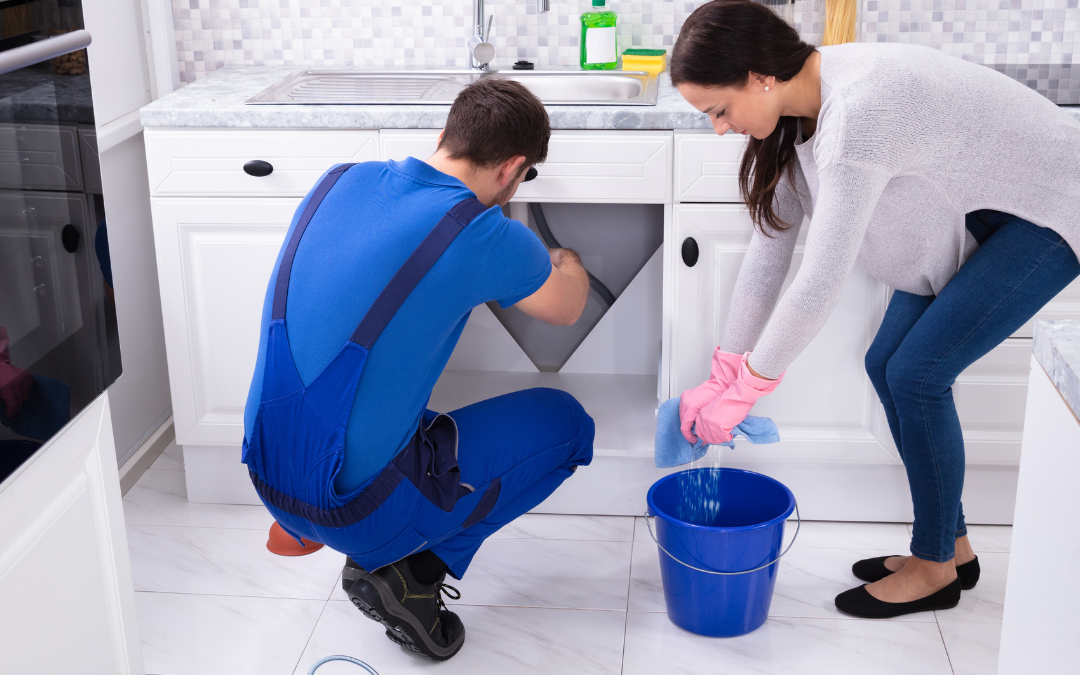Signs of Plumbing Leaks
Detecting plumbing leaks early is crucial to minimize damage. Here are some common signs that indicate the presence of a plumbing leak:
Unusual Increase in Water Bill
One of the first signs of a potential plumbing leak is an unexpected increase in your water bill. It strongly indicates a leak if you notice a significant water usage spike without changing household habits.
Water Stains or Mold Growth
Water stains on walls, ceilings, or floors can indicate a hidden plumbing leak. Also, mold or mildew in these areas suggests excessive moisture, often caused by leaks.
Dripping Sounds or Water Pooling
If you hear dripping sounds when no faucets are in use or notice water pooling in certain areas of your home, you likely have a plumbing leak. Pay attention to any unusual sounds or signs of water accumulation.
Decreased Water Pressure
A sudden decrease in water pressure could indicate a plumbing leak. A leak may affect the water supply if your faucets and showerheads have weak or inconsistent water flow.
Locating the Source of the Leak
Once you suspect a plumbing leak, locating its source is important. Here are some steps you can take to find the source of the problem:
Check Visible Plumbing Fixtures
Start by examining all visible plumbing fixtures, such as faucets, toilets, and pipes. Look for any signs of leakage, such as water drips or puddles.
Inspect the Water Meter and Pressure Gauge
Check your water meter and pressure gauge to determine if the leak is within your plumbing system or a specific fixture. Turn off all water sources in your home and monitor the meter or gauge for any changes. If there is a continuous flow of water, it indicates a plumbing leak.
Perform a Toilet Dye Test
Toilet leaks can be silent but wasteful. Add a few drops of food coloring to the toilet tank and wait 30 minutes without flushing. If the color appears in the toilet bowl, there is a leak in the toilet’s internal mechanisms.
Fixing Minor Plumbing Leaks
Minor leaks that are easily accessible can often be fixed without professional help. Here are some steps to fix minor plumbing leaks:
Repairing Leaky Faucets
Leaky faucets are a common source of plumbing leaks. Typically, worn-out or damaged washers or O-rings are to blame. Replace these components to stop the leak.
Patching Small Pipe Leaks
You can apply temporary fixes for small pipe leaks using pipe clamps, epoxy putty, or pipe repair tape. However, monitoring these repairs and consulting a professional for a permanent solution is important.
Replacing Faulty Showerheads
If your showerhead is leaking, it may need replacement. Faulty seals or damaged parts can cause water to escape, resulting in a wasteful and annoying leak. Replace the showerhead to prevent further water loss.
Dealing with Major Plumbing Leaks
Some leaks are more severe and require professional assistance. Here’s what to do when facing major plumbing leaks:
Shutting Off the Main Water Supply
In case of a major leak, shutting off the main water supply to your home immediately is crucial. Locate the main shut-off valve and turn it off to prevent further water damage.
Calling a Professional Plumber
Major plumbing leaks often require the expertise of a professional plumber. Contact a reputable plumber to assess the situation, identify the source of the leak, and provide the necessary repairs or replacements.
Repairing or Replacing Damaged Pipes
If the leak originates from damaged or corroded pipes, the plumber may need to repair or replace the affected sections. This ensures a long-lasting solution and prevents future leaks.
Preventive Measures
Preventive measures can help reduce the risk of plumbing leaks in your home. Consider the following steps:
Regular Plumbing Maintenance
Schedule regular plumbing maintenance inspections to catch potential issues before they turn into leaks. Professional plumbers can identify early warning signs and perform necessary repairs or maintenance tasks.
Insulating Exposed Pipes
Insulate exposed pipes, especially those in unheated areas, to protect them from freezing temperatures. Frozen pipes are more prone to cracks and leaks. Use pipe insulation sleeves or heat tape to prevent freezing.
Monitoring Water Pressure
Maintain appropriate water pressure in your plumbing system. Excessive pressure can strain pipes and lead to leaks. Install a pressure regulator if needed.
Conclusion
Detecting and fixing plumbing leaks is essential to safeguard your home and prevent water damage. By staying vigilant for signs of leaks, locating their source, and taking prompt action, you can minimize the risk of costly repairs and preserve the integrity of your plumbing system. Remember to address minor leaks promptly and seek professional help for major plumbing issues. With proactive maintenance and preventive measures, you can keep your home free from plumbing leaks and enjoy peace of mind.

